Abstract
Eight pigeons were initially trained to peck a white key for food under a variable-interval 1-min schedule of reinforcement. Then, a shock-avoidance schedule was initiated and food was no longer available in the experimental situation. Under the avoidance schedule, each peck on the key postponed shock for 40 sec. A warning signal, consisting of tone and red houselights, was presented after 30 sec without a response. If no response occurred, a shock was delivered 10 sec after warning-signal onset. Shocks were delivered every 10 sec in the presence of the warning signal until a response was made. The warning signal was terminated only by a response. Key pecking of all eight pigeons came under control of the avoidance schedule and responding continued throughout the 20-day avoidance training period.
Full text
PDF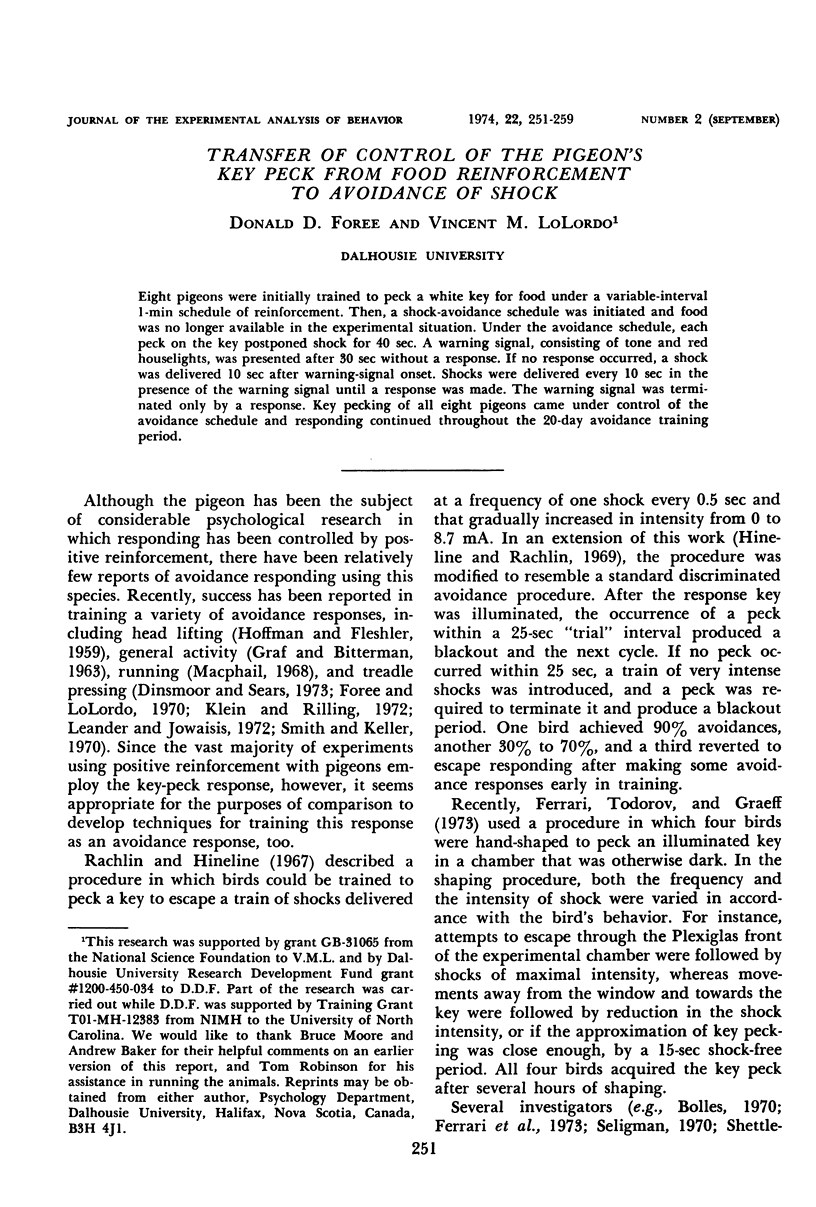
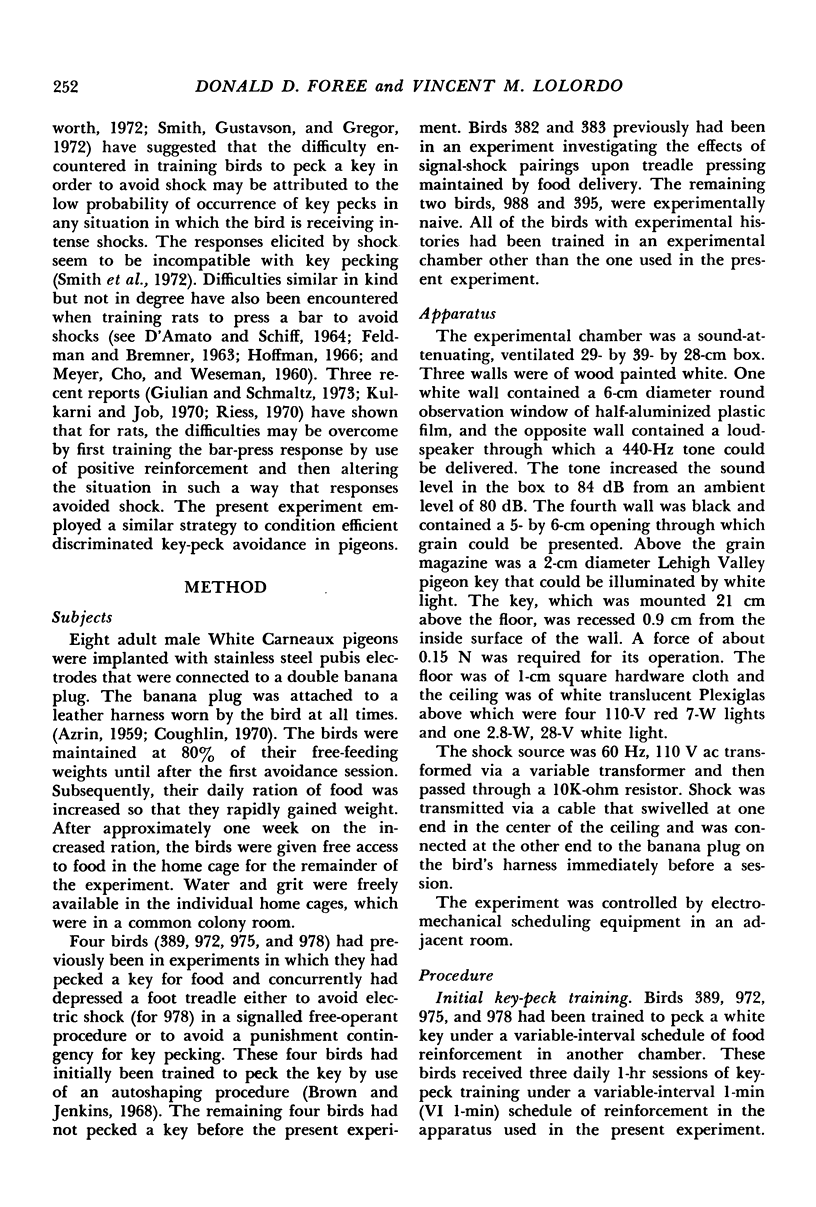
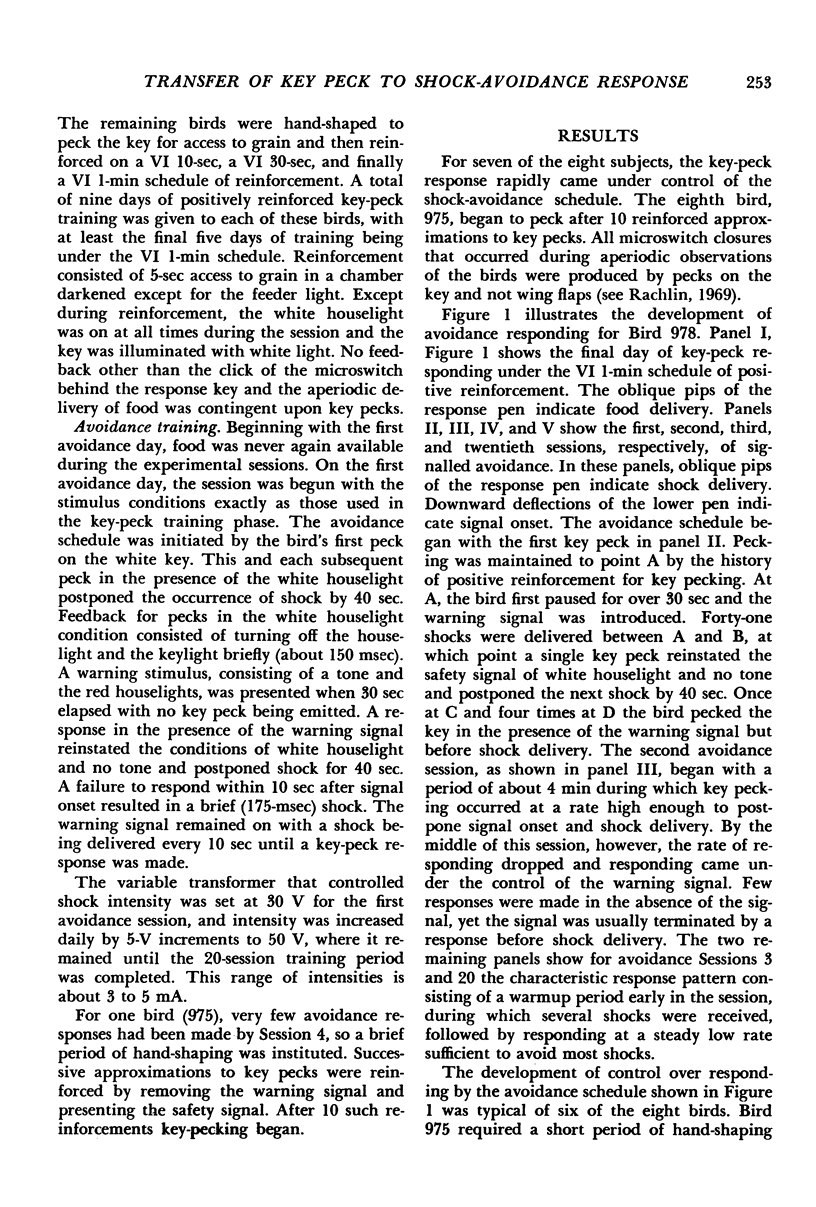
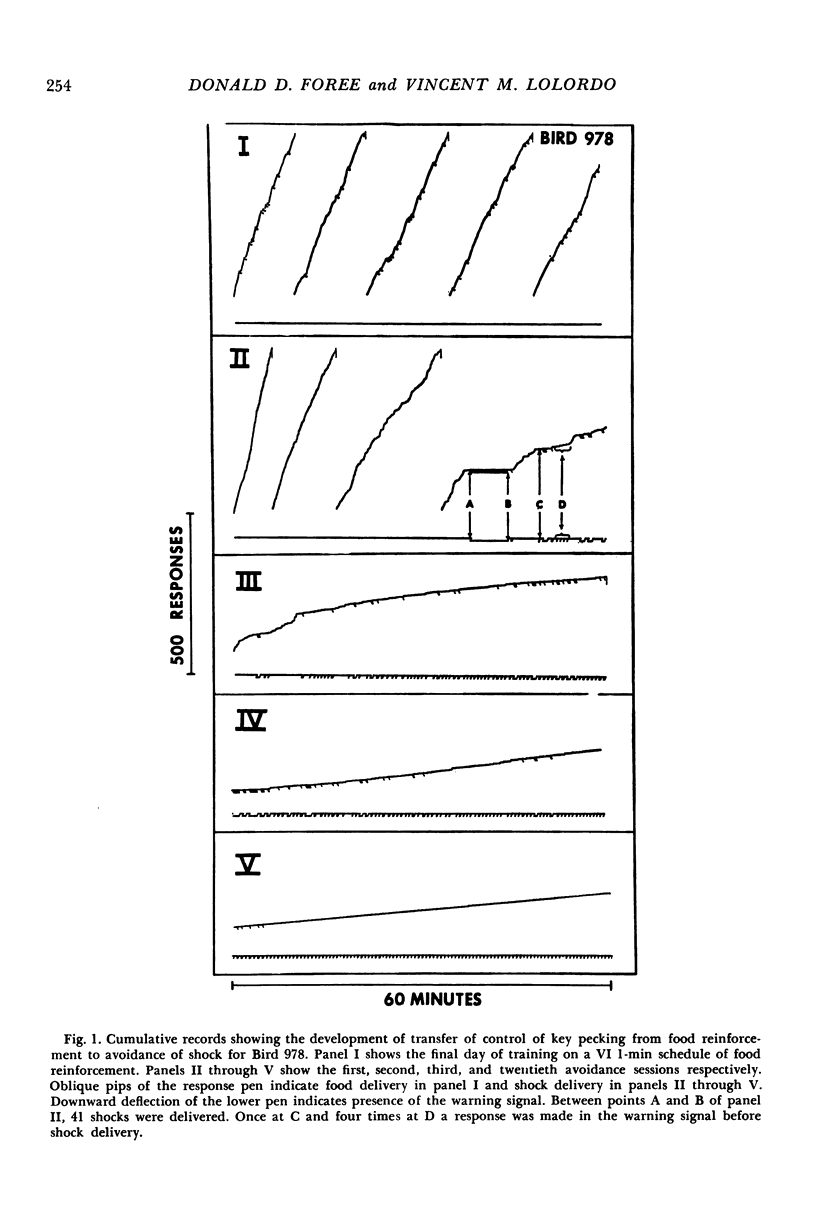
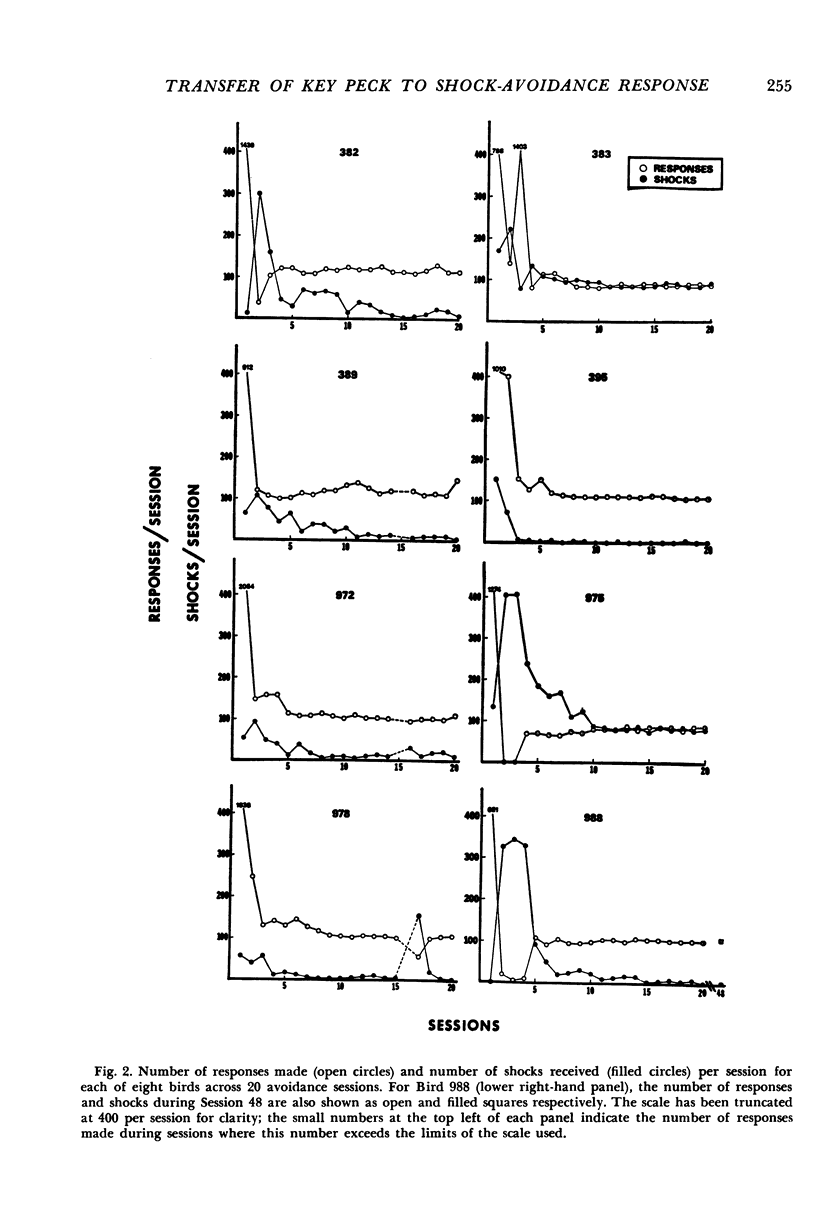
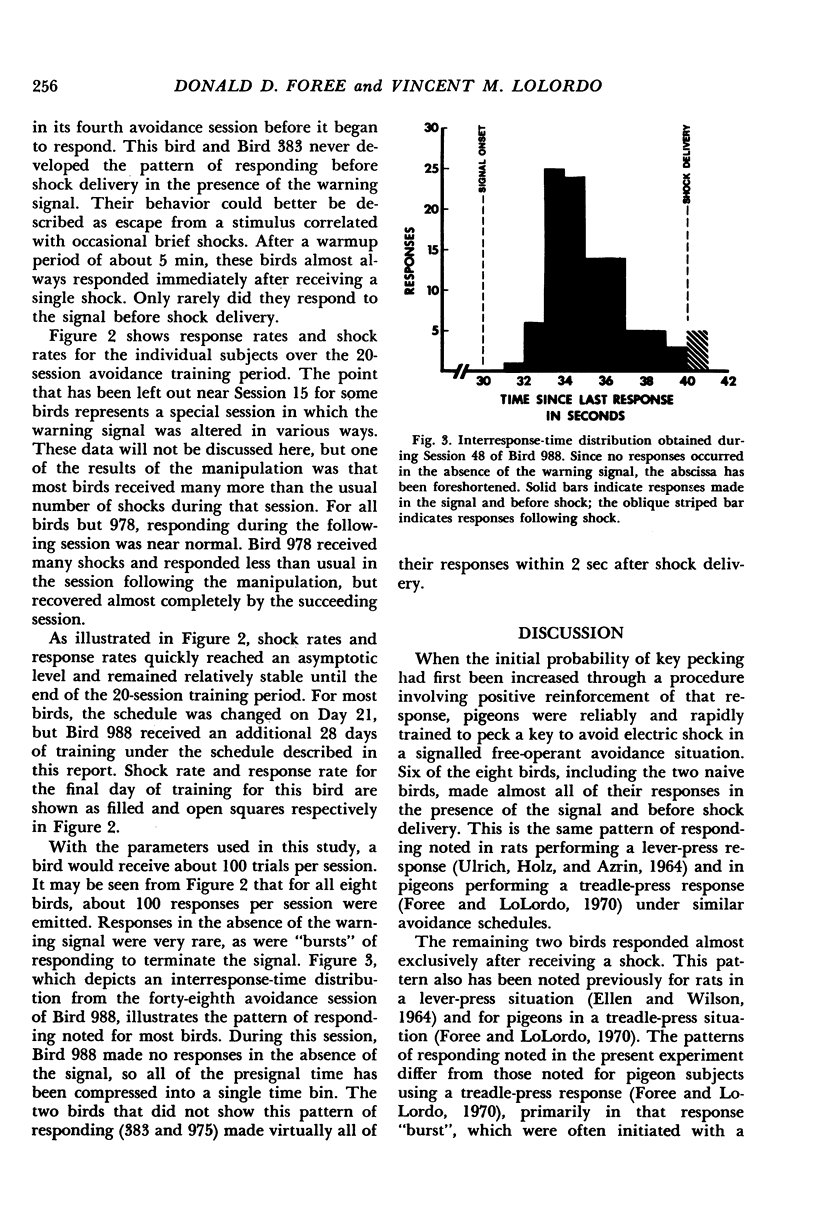
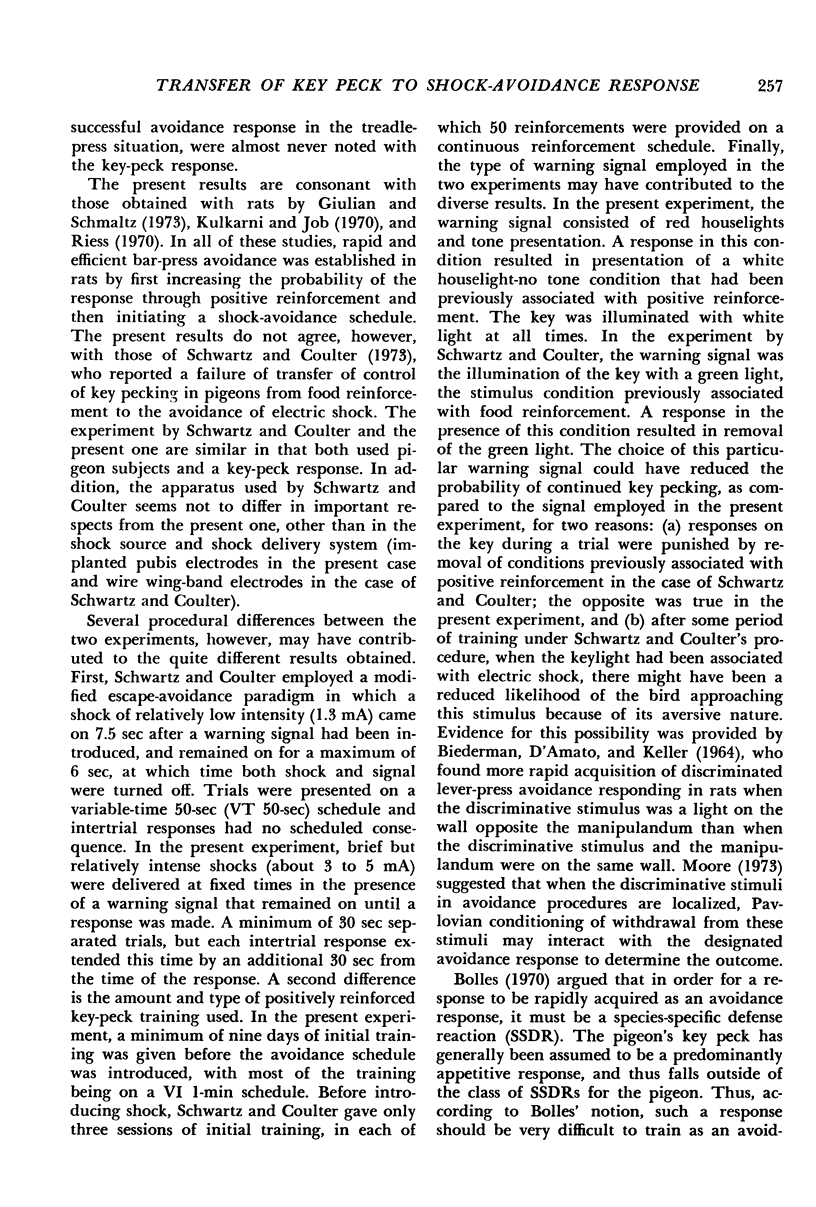


Selected References
These references are in PubMed. This may not be the complete list of references from this article.
- AZRIN N. H. A technique for delivering shock to pigeons. J Exp Anal Behav. 1959 Apr;2:161–163. doi: 10.1901/jeab.1959.2-161. [DOI] [PMC free article] [PubMed] [Google Scholar]
- Brown P. L., Jenkins H. M. Auto-shaping of the pigeon's key-peck. J Exp Anal Behav. 1968 Jan;11(1):1–8. doi: 10.1901/jeab.1968.11-1. [DOI] [PMC free article] [PubMed] [Google Scholar]
- Coughlin R. C. Inexpensive pubis electrodes for delivering shock to pigeons. J Exp Anal Behav. 1970 May;13(3):368–368. doi: 10.1901/jeab.1970.13-368. [DOI] [PMC free article] [PubMed] [Google Scholar]
- D AMATO M. R., SCHIFF D. LONG-TERM DISCRIMINATED AVOIDANCE PERFORMANCE IN THE RAT. J Comp Physiol Psychol. 1964 Feb;57:123–126. doi: 10.1037/h0046678. [DOI] [PubMed] [Google Scholar]
- ELLEN P., WILSON A. S. TWO PATTERNS OF AVOIDANCE RESPONDING. J Exp Anal Behav. 1964 Jan;7:97–98. doi: 10.1901/jeab.1964.7-97. [DOI] [PMC free article] [PubMed] [Google Scholar]
- FELDMAN R. S., BREMNER F. J. A method for rapid conditioning of stable avoidance bar pressing behavior. J Exp Anal Behav. 1963 Jul;6:393–394. doi: 10.1901/jeab.1963.6-393. [DOI] [PMC free article] [PubMed] [Google Scholar]
- Ferrari E. A., Todorov J. C., Graeff F. G. Nondiscriminated avoidance of shock by pigeons pecking a key. J Exp Anal Behav. 1973 Mar;19(2):211–218. doi: 10.1901/jeab.1973.19-211. [DOI] [PMC free article] [PubMed] [Google Scholar]
- Foree D. D., Lolordo V. M. Signalled and unsignalled free-operant avoidance in the pigeon. J Exp Anal Behav. 1970 May;13(3):283–290. doi: 10.1901/jeab.1970.13-283. [DOI] [PMC free article] [PubMed] [Google Scholar]
- GRAF V., BITTERMAN M. E. General activity as instrumental: application to avoidance training. J Exp Anal Behav. 1963 Apr;6:301–305. doi: 10.1901/jeab.1963.6-301. [DOI] [PMC free article] [PubMed] [Google Scholar]
- Giulian D., Schmaltz L. W. Enhanced discriminated bar-press avoidance in the rat through appetitive preconditioning. J Comp Physiol Psychol. 1973 Apr;83(1):106–112. doi: 10.1037/h0034323. [DOI] [PubMed] [Google Scholar]
- HOFFMAN H. S., FLESHLER M. Aversive control with the pigeon. J Exp Anal Behav. 1959 Jul;2:213–218. doi: 10.1901/jeab.1959.2-213. [DOI] [PMC free article] [PubMed] [Google Scholar]
- Hineline P. N., Rachlin H. Escape and avoidance of shock by pigeons pecking a key. J Exp Anal Behav. 1969 Jul;12(4):533–538. doi: 10.1901/jeab.1969.12-533. [DOI] [PMC free article] [PubMed] [Google Scholar]
- Klein M., Rilling M. Effects of response-shock interval and shock intensity on free-operant avoidance responding in the pigeon. J Exp Anal Behav. 1972 Sep;18(2):295–303. doi: 10.1901/jeab.1972.18-295. [DOI] [PMC free article] [PubMed] [Google Scholar]
- Lumia A. R. The relationships among testosterone, conditioned aggression, and dominance in male pigeons. Horm Behav. 1972 Sep;3(3):277–286. doi: 10.1016/0018-506x(72)90041-4. [DOI] [PubMed] [Google Scholar]
- Macphail E. M. Avoidance responding in pigeons. J Exp Anal Behav. 1968 Sep;11(5):629–632. doi: 10.1901/jeab.1968.11-629. [DOI] [PMC free article] [PubMed] [Google Scholar]
- McFarland D. J., Baher E. Factors affecting feather posture in the Barbary dove. Anim Behav. 1968 Feb;16(1):171–177. doi: 10.1016/0003-3472(68)90127-9. [DOI] [PubMed] [Google Scholar]
- Rachlin H. Autoshaping of key pecking in pigeons with negative reinforcement. J Exp Anal Behav. 1969 Jul;12(4):521–531. doi: 10.1901/jeab.1969.12-521. [DOI] [PMC free article] [PubMed] [Google Scholar]
- Rachlin H., Hineline P. N. Training and maintenance of keypecking in the pigeon by negative reinforcement. Science. 1967 Aug 25;157(3791):954–955. doi: 10.1126/science.157.3791.954. [DOI] [PubMed] [Google Scholar]
- Riess D. A shaping technique for producing rapid and reliable Sidman bar-press avoidance. J Exp Anal Behav. 1970 Mar;13(2):279–280. doi: 10.1901/jeab.1970.13-279. [DOI] [PMC free article] [PubMed] [Google Scholar]
- Smith R. F., Gustavson C. R., Gregor G. L. Incompatability between the pigeons' unconditioned response to shock and the conditioned key-peck response. J Exp Anal Behav. 1972 Jul;18(1):147–153. doi: 10.1901/jeab.1972.18-147. [DOI] [PMC free article] [PubMed] [Google Scholar]
- Smith R. F., Keller F. R. Free-operant avoidance in the pigeon using a treadle response. J Exp Anal Behav. 1970 Mar;13(2):211–214. doi: 10.1901/jeab.1970.13-211. [DOI] [PMC free article] [PubMed] [Google Scholar]
- ULRICH R. E., HOLZ W. C., AZRIN N. H. STIMULUS CONTROL OF AVOIDANCE BEHAVIOR. J Exp Anal Behav. 1964 Mar;7:129–133. doi: 10.1901/jeab.1964.7-129. [DOI] [PMC free article] [PubMed] [Google Scholar]


